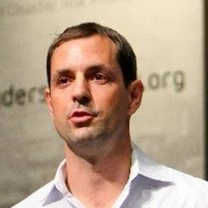 A hurricane is about to batter Caribbean beach.
A hurricane is about to batter Caribbean beach.
Like many other good ideas, this one started on a paper napkin. Fifteen years ago, a World Bank team was in Jamaica to arrange emergency relief funding to cope with destruction of Hurricane Ivan. This disaster destroyed 6,000 houses and affected almost 400,000 people. In a restaurant in Kingston, we began brainstorming ideas for creating a lasting financial solution for rapid response in the inevitable event of future hurricanes or earthquakes.
Back in 2005, disaster risk insurance relied on traditional insurance where payouts are based on actual losses. This can be slow, as losses must be assessed on the ground. With parametric insurance, payouts are based on the severity of the storm, rather than actual losses, making payouts quicker. But this concept was new and largely untested at that time. The World Bank had just launched a series of parametric crop insurance pilots for small and marginal farmers in India and an index-based livestock insurance program for herders in Mongolia. We wondered. What if parametric products, based on official measurements of windspeed or ground motion, were used for governments? And what if, instead of working on their own, Caribbean governments could join forces by pooling their reserves and accessing international financial markets at cheaper rates? We sketched this idea on a paper napkin, and the journey began.
Fifteen years later, four sovereign catastrophe risk pools are up and running, protecting about 40 low- and middle-income countries. Total insurance coverage has reached $1.2 billion. The pools are Caribbean Catastrophe Risk Insurance Facility (CCRIF-SPC), which is by far the biggest; the Pacific Catastrophe Risk Insurance Company (PCRIC); the African Risk Capacity (ARC); and the newly established Southeast Asia Disaster Risk Insurance Facility (SEADRIF). They provide their member countries with affordable parametric insurance solutions against disasters and climate shocks. Those “pools” share the same principles. They have built joint reserve funds that retain first losses and transfer excess losses to the international reinsurance markets on competitive terms.
Since early inception, those sovereign pools have been innovating to better respond to the needs of their members. CCRIF-SPC launched new products for fishermen and electricity companies. ARC developed catastrophe risk insurance policies for UN agencies and other humanitarian actors. PCRIC is setting up a private sector window to help domestic insurance companies access international catastrophe reinsurance markets, and SEADRIF launched a flood coverage relying on innovative satellite technology.
Some key lessons have been drawn from these experiences (World Bank 2017, WRI 2019). Pools require strong political commitment from their member countries as well as donor support, especially during the design and preparation stage. Pools can encourage the member countries to develop disaster response plans to ensure timely, transparent, and efficient use of funds following disasters. The pools have also driven the development of public goods such as data infrastructure, risk models, and improved institutional capacity. Pools can offer cost-effective insurance solutions in various ways, including through risk diversification, joint reserves, and facilitated access to international capital markets. The benefits of pools can be enhanced by combining different financial instruments to address different needs.
Looking forward, those pools can play a critical role in the new disaster risk finance architecture, as long as their roles and limitations are clearly defined.
Pooling more than catastrophe risks. The pools are evolving toward full-service regional platforms. Initially they were set up to offer specific (parametric) catastrophe risk insurance products to their member countries. Over time, they have offered new financial products and have become effective channels by which financial markets can more efficiently take on sovereign catastrophe risk. The pools have also moved beyond insurance as their primary value proposition and expanded their services to include training programs and public goods. The pools have invested extensively in developing customized probabilistic catastrophe risk models, giving their member countries first-hand access to state-of-the-art risk assessment and financing tools. These are useful not only for insurance solutions but also for broader financial and climate risk management decision-making. The shift toward disaster risk financing platforms will likely lead to new solutions, including for larger and more developed countries, and will offer more customized financial instruments.
Beyond post-disaster budget support. Initial (parametric) products offered by the pools were to make payouts akin to budget support for emergency funding post disaster. While this gives the member countries the flexibility to manage emergency relief and early recovery, the pools are now considering ways to help countries better manage their portfolio of assets and liabilities, including through indemnity insurance. This latter approach involves not only using more precisely targeted financial instruments, but also putting in place the domestic mechanisms to clarify and quantify contingent liabilities, and then connecting these directly to funding mechanisms. Programs that create significant contingent liabilities and therefore require specific attention include, for example, public assets and infrastructure, and adaptive social safety nets.
National pools. The development of pools should not be limited to multi-country platforms. Similar principles and lessons are valuable to the governments of larger countries to develop national platforms that pool the disaster risks faced by local governments. Such risk pools could offer an opportunity to strengthen national systems by establishing clear rules for post disaster support while allowing access to financial markets at more competitive rates. They can also be used to incentivize action towards risk reduction while providing technical support not always available to local government.
The landscape of disaster risk finance has changed dramatically over the last 15 years and sovereign catastrophe risk pools have played a central role in improving the financial resilience of vulnerable countries , which is expected to continue to grow as countries are fighting against climate change. This will require thinking even further out of the box, as done 15 years ago, and using many more napkins to sketch innovative ideas.



Join the Conversation